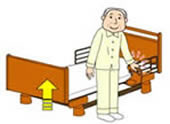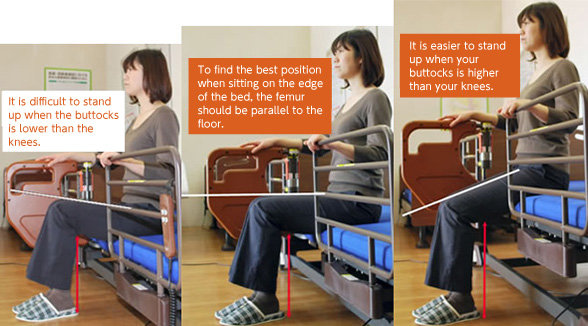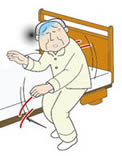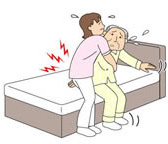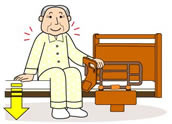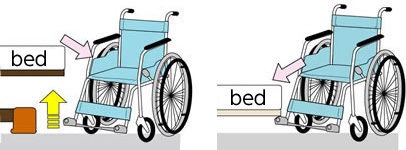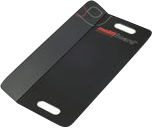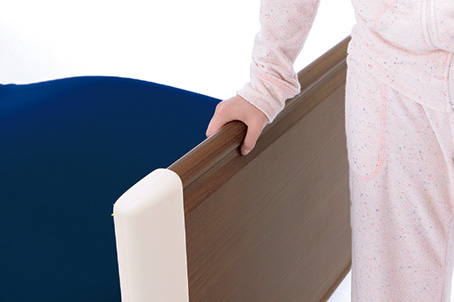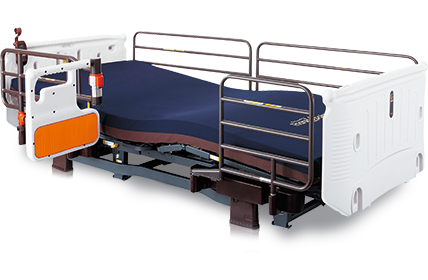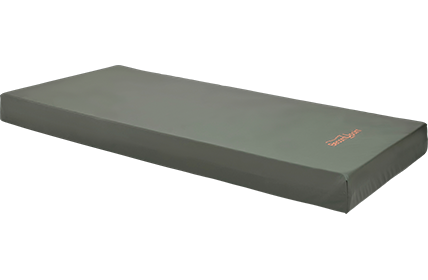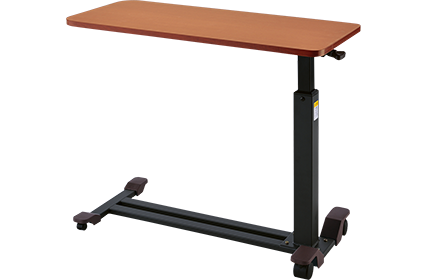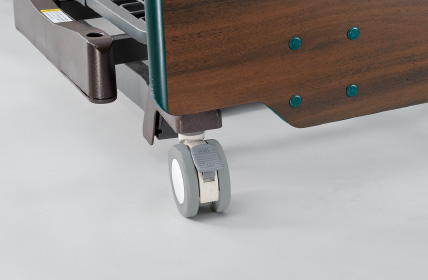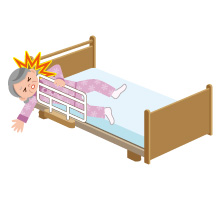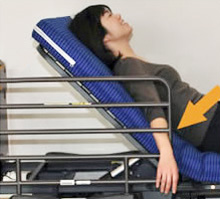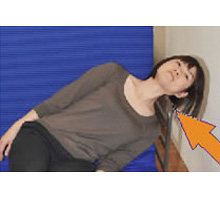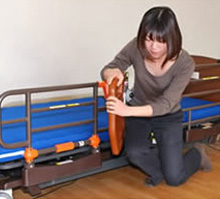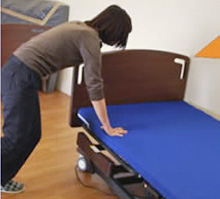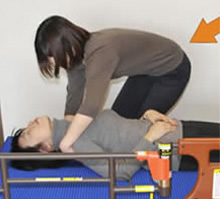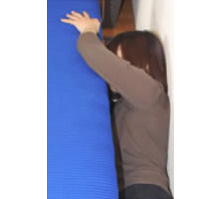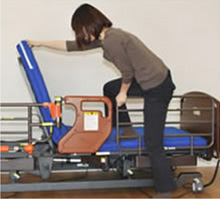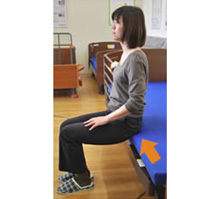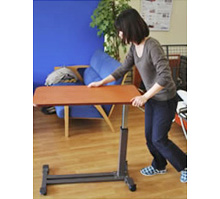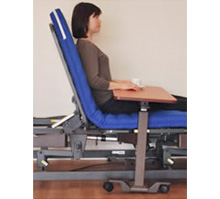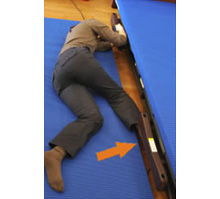The Back Lifting Function Assists in Getting Out of Bed
Using the power of the motor to lift the back from 0°to 70°, the user can stop the bed from lifting at their preferred angle. It is an effective function for the following type of users:
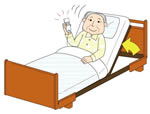
●People who have difficulties getting up due to weakened muscles
Prolonged lying can weaken muscles and inhibit the ability to walk. The heart and lungs also weaken. Because of this, standing up suddenly may cause a sudden drop in blood pressure (orthostatic hypotension) and the user is likely to fall over.
Please get up slowly using the back raising function, especially when getting up to go to the bathroom at night or in the morning,
●People with high blood pressure or low blood pressure
When people with chronic high blood pressure, extremely weakened muscles, or partial paralysis caused by a stroke tries to get up on their own, blood pressure can rise to over 200mmHg, and is very dangerous. Please use the motorized back lifting function.
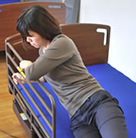
●People with lumber pain
Raising the back and knees just a few degrees, as shown in the picture on the right, allows the back to fit into the mattress, which disperses the body’s pressure and alleviates lumbar pain and prevents bedsores.
This angle also prevents the internal organs from expanding and putting pressure on the lungs, which is beneficial for patients with respiratory issues and those with a weakened physique.

●Those who have trouble swallow solid foods (dysphagia)
Swallowing is easier when slowly eating small portions while sitting up in bed or with the back is lifted. Keeping the back lifted for a while after eating also prevents a reflux of food in the stomach.
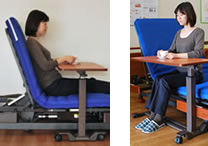
Eating while in sleeping position is very dangerous.
It is very dangerous to eat while lying down because lying down makes swallowing difficult, which causes food to enter the lungs and cause aspiration pneumonia.
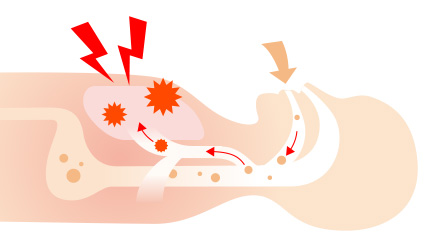
●Prevent injuring the back of the caregiver
Lifting a person who is lying down to a sitting position requires an enormous amount of strength and providing assistance in a strenuous position can injure the back.
* The Ministry of Health, Labour and Welfare has pointed out that the percentage of people developing back pain in the caregiving industry is higher than other industries. Please be very careful about providing care in a strenuous position.
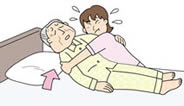
Caution for Lifting!
●Beware of Back Pressure
Immense pressure is put on the back when an immobile person is lifted up by motor. For an immobile person, this can cause extreme discomfort and pain, and can even lead to difficulty breathing. While lifting the back and after lifting the back, it is necessary to lift the body off the mattress to release this pressure.
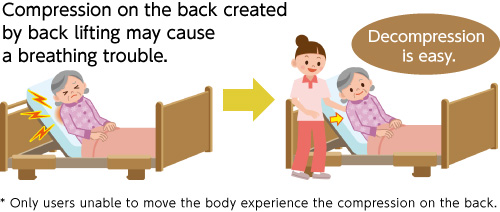
The Care Insurance Rental Nursing Care Bed “Miolet Series” and the “Ultilet Series” bed for nursing care institutions that have back-lifting functions also have a unique back-sliding function, which alleviates pressure on the back at approximately 60° and shifts the pressure to shoulders at around 70°. Simply place a hand behind the user’s shoulders to release the pressure.
Anyone can experience the back pressure
Simply lift your back from a 0º to 70º position without moving your body at all. Try experiencing the pain caused by back pressure to better understand how to provide care.
●Be Careful of Falling to the Side
Rather than raising the bed to 70º, users with a higher level of care needs or do not have the strength to keep their body in an upright position should raise the bed to a 30~45ºangle to avoid falling over to the side.
* As shown in the picture on the right, the user may fall over with their head or neck on the side rails, which may place an immense amount of pressure the arteries and respiratory tracts and cause major accidents.
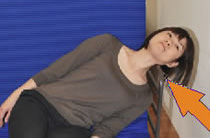
A “Long Side Rail” or “Bed Grip” is recommended to prevent the user from falling out of bed should they accidentally fall to their side.
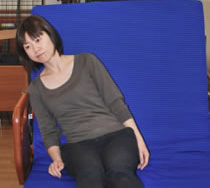
Leg Lifting Function
It is difficult for blood to flow back up should users with narrow veins in their legs caused by diabetes or heart issues and users with poor blood circulation remain in a seated position for an extended period of time, which may cause blood congestion. Lifting the legs and laying down should relieve the blood congestion.
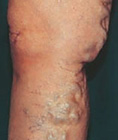
* If blood congestion continues, it can lead to varicose veins or blood clots in arteries as shown in the picture on the right.
* The 3 Motors Type beds from the Care Insurance Rental Nursing Care Bed “Miolet Series” and “Ultilet” beds for nursing care institutions can raise the legs independently.
